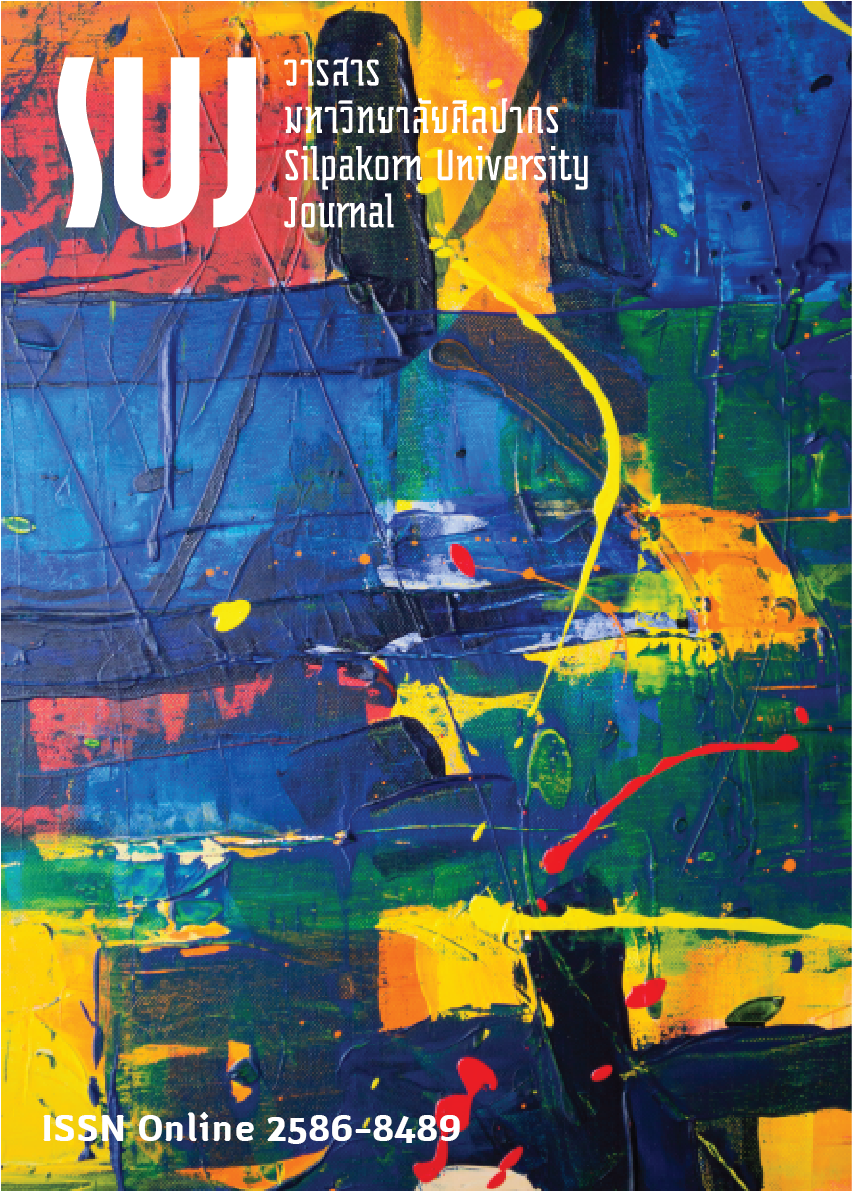หัตถศิลป์ผ้าปักไทย - เวียดนาม : ประวัติศาสตร์ วัฒนธรรมและวิถีชีวิต (Thai - Vietnam emboridery: history, cultural and lifestyle)
Main Article Content
Abstract
งานหัตถศิลป์หมายถึงงานศิลปกรรมที่มนุษย์สร้างขึ้นเพื่อใช้สอยและเป็นประโยชน์ในการดำรงชีวิต โดยแบ่งได้เป็น 2 ประเภท คือ งานหัตถศิลป์ชั้นสูง ซึ่งเป็นงานฝีมือของช่างหลวง และงานหัตถศิลป์พื้นบ้านซึ่งสร้างโดยชาวบ้าน การปักผ้าจึงเป็นงานหัตถศิลป์แขนงหนึ่งมาตั้งแต่สมัยโบราณกาล ซึ่งพบว่าเป็นงานศิลปะในหลากหลายวัฒนธรรมและชนชาติ ทั้งงานหัตถศิลป์ชั้นสูงที่สืบเนื่องจากราชสำนัก และงานหัตถศิลป์พื้นบ้าน โดยเป็นการปักประดับตกแต่งผืนผ้าให้มีความสวยงามด้วยวัสดุ และเทคนิคกรรมวิธีต่างๆ ทั้งบนผ้าไหมหรือฝ้าย ในสมัยประวัติศาสตร์จนถึงปัจจุบัน งานหัตถศิลป์ผ้าปักไม่เพียงใช้เป็นเครื่องนุ่งห่มและเครื่องใช้ภายในบ้าน แต่ยังเป็นสินค้าสำคัญในการติดต่อค้าขายและเครื่องบรรณาการระหว่างเอเชียตะวันออกเฉียงใต้ เอเชีย ตะวันออกกลางและยุโรป ดังนั้นจึงกล่าวได้ว่าการปักผ้าจึงเป็นวัฒนธรรมร่วม โดยเฉพาะอย่างยิ่งในประเทศไทยและเวียดนาม ที่พบความเชื่อมโยงกันทั้งทางประวัติศาสตร์ วัฒนธรรมและวิถีชีวิต
Craftsmanship is artworks which humans create to be used in daily life and to benefit human livings. There are two types of craftsmanship: royal craftsmanship which belongs to high court and folk craftsmanship which belongs to ordinary people. Embroidery is one of the ancient craftsmanship. Both embroidery craftsmanship of high court and local people were found in different cultures and nations. These embroidery works were decoration on silk or cotton fabric, using various materials and techniques. Until now, embroidery craftsmanship is not only used as a daily life garments but also a significant products in trading and tributes among South East Asia, the Middle East, and Europe. It can be concluded that embroidery craftsmanship is the shared culture, especially between Thailand and Vietnam which have a tie in history, culture, and way of life.
Downloads
Article Details
References
Conway, S. (2003). Lan Na Male Dress in Peace and War. Textiles of Southeast Asia: Tradition, Trade and Transformation: 112-123.
Kulthamrong, Rungarun. (2014). The Existence of Chang Sa-na or Sewing Work in Thai Society in the Rattanakosin Era (การดำรงอยู่ของงานช่างสนะในสังคมไทยสมัยกรุงรัตนโกสินทร์ ). Journal of Thai Studies, 9(2): 99-130.
Lien, V. H. (2015). Royal Hue: Heritage of the Nguyen Dynasty of Vietnam. Thailand: River Books.
Thimakul, Nithima. Royal Traditional Crafts School for women. Interview, March 10, 2016.
Tientong, Dollaya. (2016). The Advancement of Thai Traditional Craft and Needlework of Thai Women in the Reign of King Chulalongkorn (Rama V) (ความก้าวหน้าในศิลปหัตถกรรมการเย็บปักถักร้อยของสตรีไทย รัชสมัยพระบาทสมเด็จพระจุลจอมเกล้าเจ้าอยู่หัว). Journal of Thai Studies, 9(2): 73-97.
Utiswannakul, Patcha. Fashion and Creative Art Research Unit, Chulalongkorn University. Interview, March 5, 2016.
Utiswannakul, Patcha, & Disatapundhu, Suppakorn. (2017). Asian Textile Wisdom: Identity of Thai, Laos, and Vietnam Embroidery (ภูมิปัญญาผ้าอาเซียน : อัตลักษณ์ทุนวัฒนธรรม หัตถศิลป์ ผ้าปัก ไทย ลาว และเวียดนาม). Journal of Fine Arts Research and Applied Arts, 4(1): 2-40.


